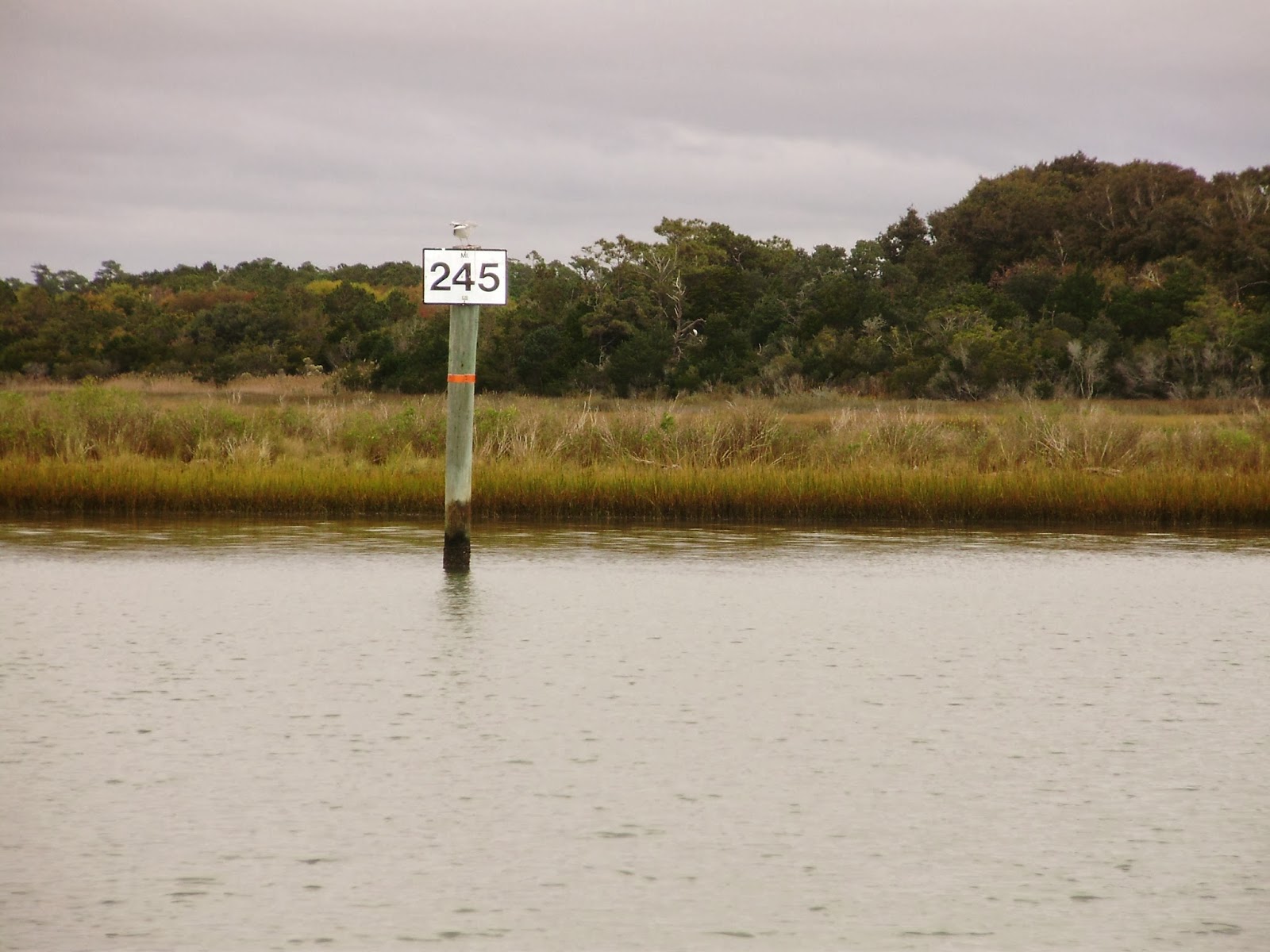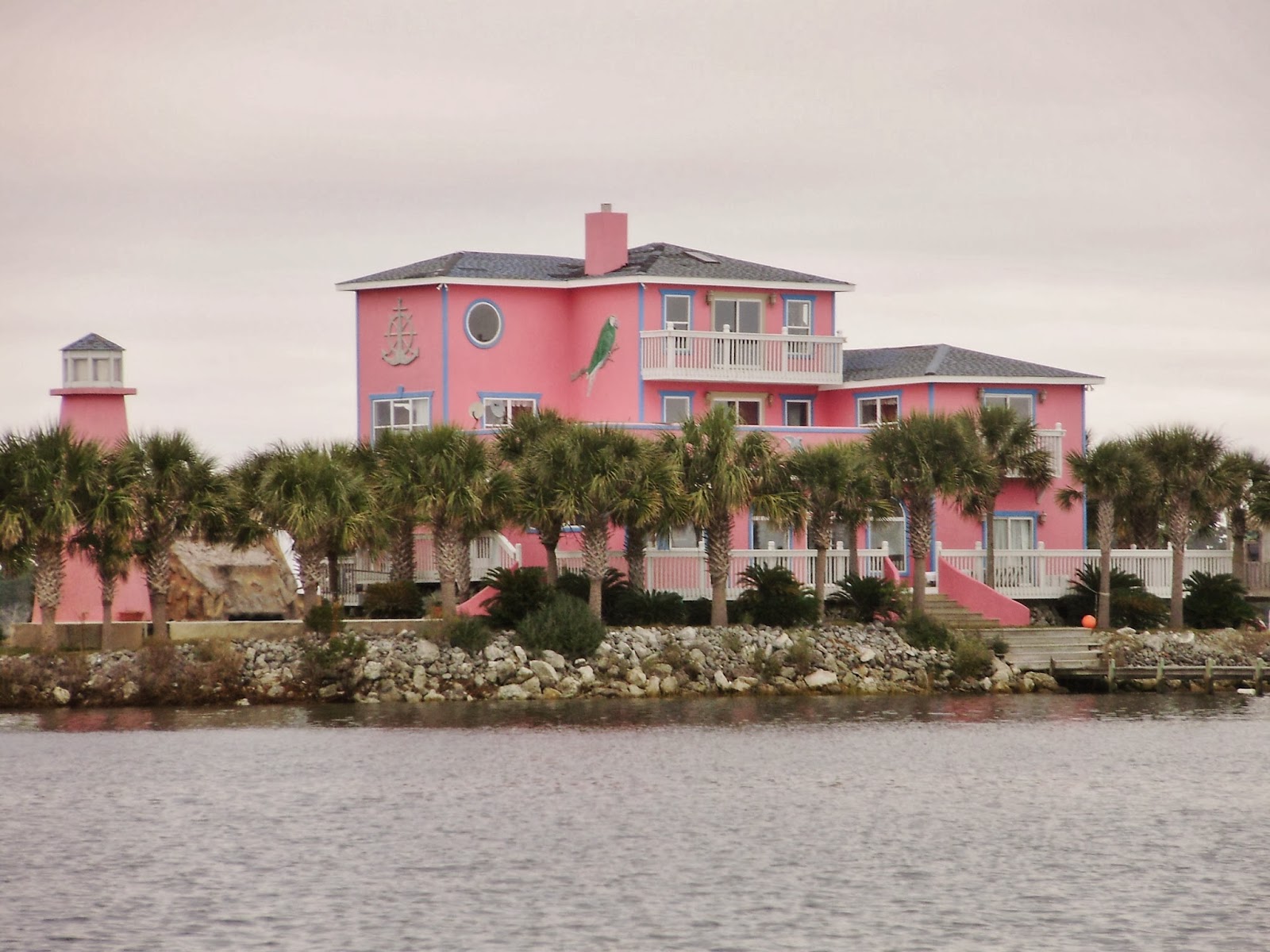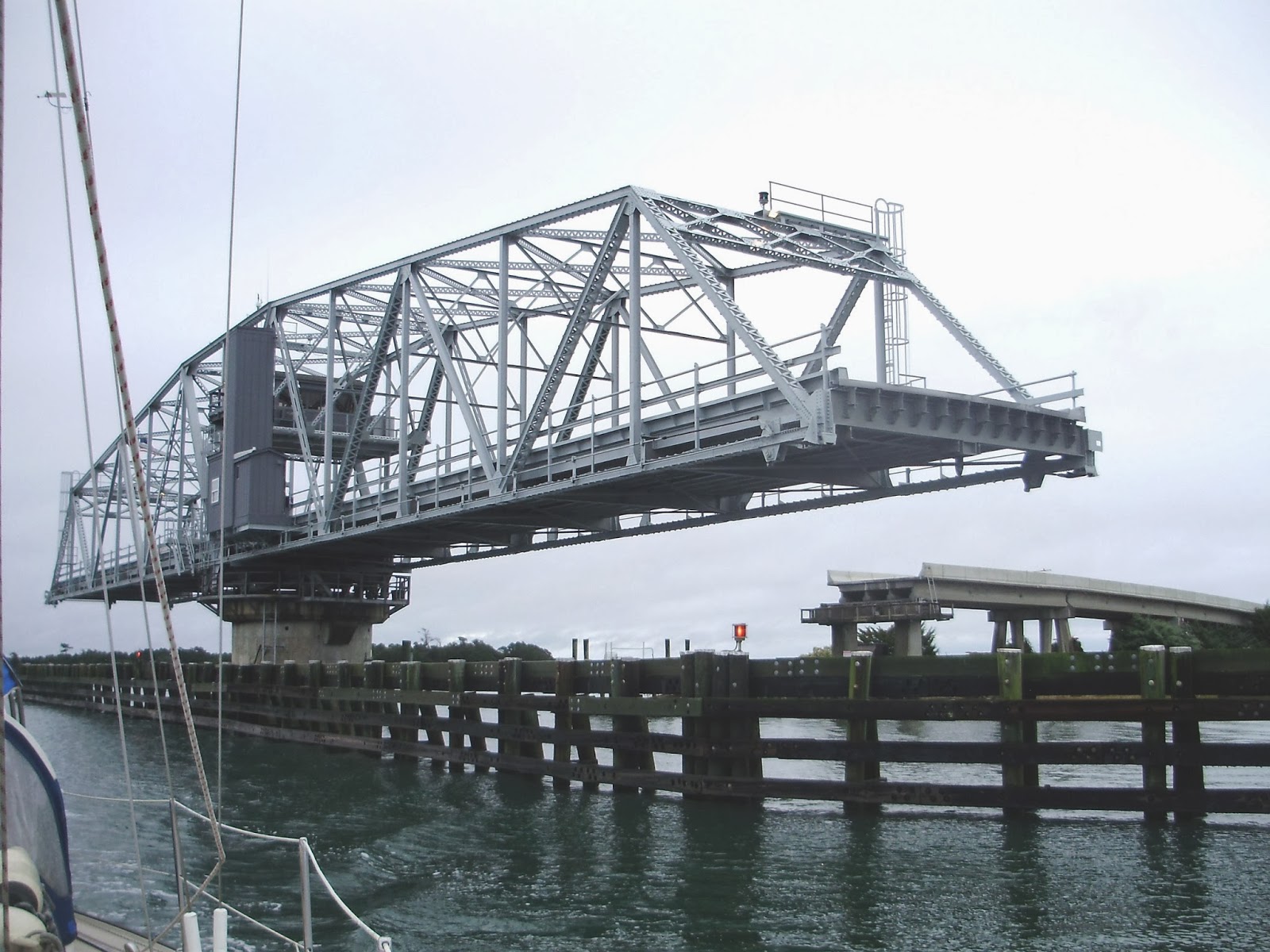Yesterday I stood at the wheel five hours, wrestling with currents, tides, and the mentally taxing struggle to stay within the confines of a narrow, lightly marked channel. These are views from the wheel.
Picture a marshy waterway about 10-20 boatwidths wide and a few feet deep. Somewhere in the middle, the Corps of Engineers dredges a deeper channel every few years, about 2-3 boatwidths wide. To stay in the channel, we rely heavily on the depth sounder to tell us when the boat is drifting toward the edge. For me, serious anxiety kicks in when the depth sounder goes down, down, down. I zigzag back and forth, searching for deep water. Pope takes it more lightly, having run aground numerous times in his sailing career, and lived.
These white signs mark the miles from the beginning of the ICW outside of Norfolk. Green and red markers of various shapes and sizes sporadically indicate the left and right sides of the channel.
Sometimes the barrier islands (left side of Intracoastal Waterway) and mainland (right side) are scenic--wooded or sandy. Other times, they are lined, depressingly, with high rises and McMansions.
I remember (fondly) backpacking trips with my friends Greg, Carol, and Eira when it rained hard, my boots and Gore-Tex rain gear soaked through, the tent seams leaked, and the sun took a long vacation. I see some parallels in our last 24 hours.
Late in the day, we revved up the engine--spitting white smoke--to make a 5 pm bridge opening at Surf City, because it would be dark before the next opening at 6 pm, and we needed to find a place to stop for the night. The center of this bridge swings sideways around a center post.
The rain increased in earnest. You could say that our “tent” seams are leaking, because the boat is dripping from screws through the deck and hatches and from window casings. As in previous evenings (see “Water, Water Everywhere”), I employed every dry towel and dry rag under known leaks. (Some towels and rags were still soaked from cleaning up the diesel fuel leak.) By morning, three new drips had announced themselves, via wet spots on cushions and mattress.
We left the (illegal) dock at the crack of dawn, 6:15 am, with wet cushions, as soon as we could distinguish red buoys from green--essential for staying inside the narrow channel.
We left the (illegal) dock at the crack of dawn, 6:15 am, with wet cushions, as soon as we could distinguish red buoys from green--essential for staying inside the narrow channel.
Pope maneuvered the boat away from the dock in low light, shallow water, and a strong current, hitting only one piling in the process. He stayed
at the wheel all morning in his $20 rubberized yellow foul weather gear from WalMart,
because my $250 GoreTex from Appalachian Outfitters was soaked inside and out.
Despite the rain and currents, we made good mileage yesterday—55 miles, our longest continuous
segment to date. We didn’t run aground or bump into any boats or bridges. The
engine ran reliably, though a little smoky. Today, we made some serious mileage again--40 miles.--despite even stronger currents. The sun came out in the afternoon. We are making decent time overall; we’ve covered 2/3 of eastern North Carolina.
That's what it's really like, folks.
I'll save Part II for a sunnier, easier day, when the romantic fantasy of a leisurely cruise to the islands again takes root.











No comments:
Post a Comment